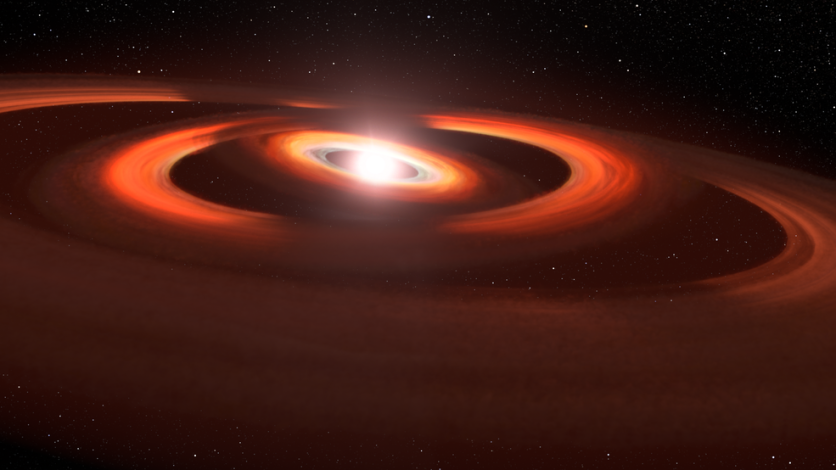A groundbreaking study led by astrophysicists at the University of Central Lancashire (UCLan) discovered that young planets are not the perfect spheres the scientific community previously considered.
Contrary to popular belief, these new planets called 'protoplanets' emerge from stars with a distinct flatness, resembling oblate spheroids rather than the expected spherical shapes (via Phys.org).

Study Takes on Young Planets' Flatness
The research, recently accepted for publication in Astronomy & Astrophysics Letters, challenges traditional notions of planetary formation.
The team, hailing from UCLan's Jeremiah Horrocks Institute for Mathematics, Physics, and Astronomy, used cutting-edge computer simulations to delve into the intriguing topic of planet birth.
The scientists looked into the theory of disk instability, which proposed that protoplanets form rapidly due to the disintegration of large rotating disks of dense gas that encircled young stars.
Dr. Adam Fenton, the lead researcher, and a recent Ph.D. graduate, emphasized the importance of this approach: "This theory is appealing due to the fact that large planets can form very quickly at large distances from their host star, explaining some exoplanet observations."
The study, which required half a million CPU hours on the UK's DiRAC High-Performance Computing Facility, discovered that these budding planets have a distinct flatness, similar to oblate spheroids like Smarties candy.
Smarties-Shaped
"We have been studying planet formation for a long time, but never before had we thought to check the shape of the planets as they form in the simulations. We had always assumed that they were spherical," remarked Dr. Dimitris Stamatellos, co-investigator and Reader in Astrophysics at UCLan.
"We were very surprised that they turned out to be oblate spheroids, pretty similar to smarties," the expert added.
The flattened structure of these young planets has profound implications for our understanding of planetary formation mechanisms. The traditional core accretion theory, suggesting gradual growth from dust particles, faces a formidable contender in the disk-instability model.
This newfound insight aligns with the swift formation of planets from large protostellar disks and provides a compelling explanation for certain exoplanetary observations.
Moreover, the researchers uncovered another intriguing aspect of planetary growth. New planets, it seems, grow asymmetrically, with material predominantly falling onto them from their poles rather than their equators. This finding raises important questions about the observational angles from which we perceive young planets through telescopes.
According to popular theories, when the pieces of rock reach a diameter of about 1,000 kilometers, gravity takes over and smooshes the mountainous rocks into a round planet.
Observations made possible by facilities like the Atacama Large Millimeter Array (ALMA) and the Very Large Telescope (VLT) have allowed scientists to peer into the early stages of planet formation.
Similar Studies
A similar study published in 2019 discussed how small particles, or dust grains, in the disks around young stars, can combine to form larger objects, such as planets.
The study suggests that some dust traps, along with other factors such as high-metallicity regions, can cause streaming instability or even the formation of planetesimals, which are the building blocks of planets.
Stay posted here at Tech Times.
Related Article : NASA Wraps Up 1st Phase of Ambitious Project That Aims to Put a Nuclear Fission Reactor on the Moon

ⓒ 2025 TECHTIMES.com All rights reserved. Do not reproduce without permission.




